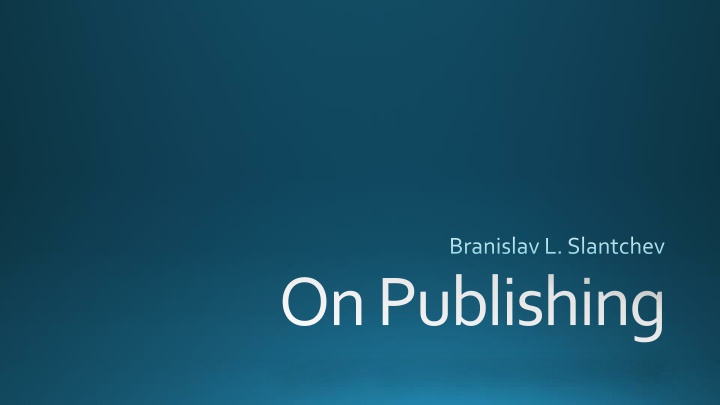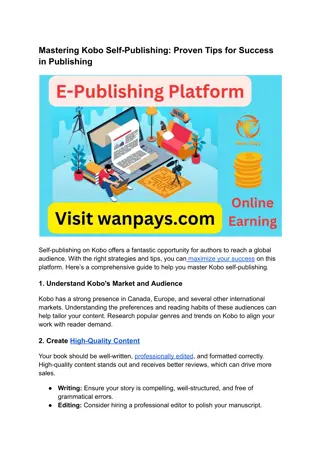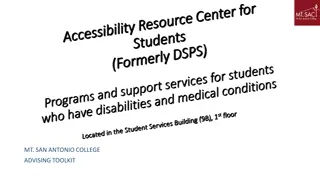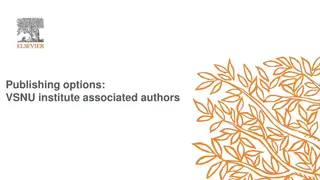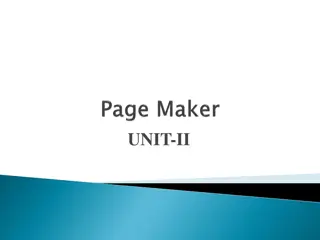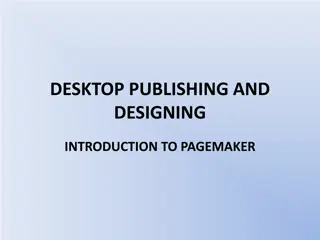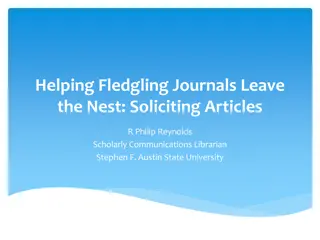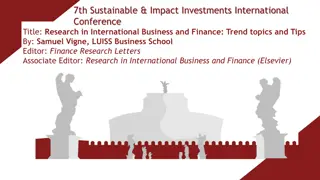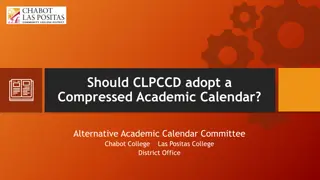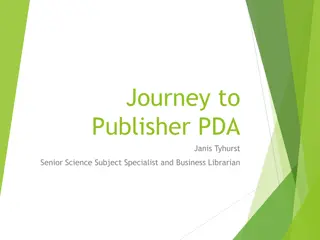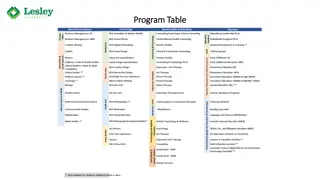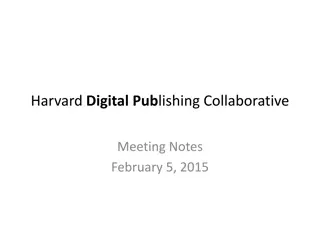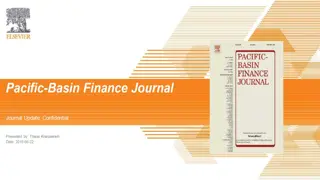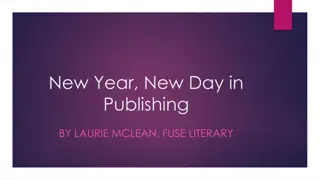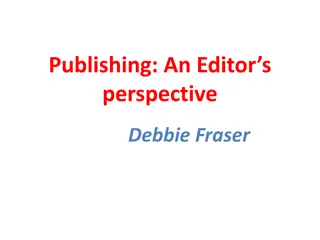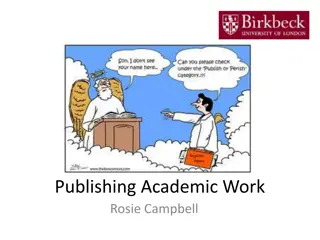Insights on Academic Publishing Strategies
In this collection of tips and advice, learn about the process of submitting articles and books, strategies for publishing, and selecting journals. Gain valuable insights on how to navigate the academic publishing world effectively to increase your chances of success.
Download Presentation

Please find below an Image/Link to download the presentation.
The content on the website is provided AS IS for your information and personal use only. It may not be sold, licensed, or shared on other websites without obtaining consent from the author.If you encounter any issues during the download, it is possible that the publisher has removed the file from their server.
You are allowed to download the files provided on this website for personal or commercial use, subject to the condition that they are used lawfully. All files are the property of their respective owners.
The content on the website is provided AS IS for your information and personal use only. It may not be sold, licensed, or shared on other websites without obtaining consent from the author.
E N D
Presentation Transcript
Branislav L. Slantchev On Publishing
Caveat Emptor Only advice about venues I know: Refereed journals Chapters in edited volumes Refereed books No clue about: In-house journals Editorials Vanity presses Trade books Textbooks
Generic (useless) advice Do competent research on an exciting topic! Be clear and concise Avoid jargon Spell-check & proof-read Write focused lit reviews Take care with introduction Think about title & abstract Be generous with acknowledgments
The Process Articles: Submit -> wait Nmonths -> get rejected Editors & referees are very busy Top journals 5-7% acceptance Easy journals 10-12% acceptance Rejection is modal category: Most papers not ready for prime time Many are badly targeted On average, Better work ends up in better journals I have no evidence for that
The Process Books (university press) Editor = feudal baron Modal category: desk rejection Contact editor early (perhaps get introduced) 95% guarantee to kill book: admit it s your dissertation Know your audience / estimate interest Proposal vs. completed manuscript Multiple submissions OK (usually) Takes much longer to write You don t finish a book, the book finishes you K. Schultz
Strategies Pancakes: Publish a lot Regardless of quality of outlets Pros: Low risk Long CV Experience Cons: Work often subpar Reputation? Home-runs: Publish less Mostly in top outlets Pros: High impact High visibility Reputation! Cons: High risk Short CV
Strategies Both strategies work Mostly personal style / preference Few can pull off long CVs + excellent work Some methods make it easier to publish more but that does not mean youcan do it! FACT: not all of our papers deserve to be in a top-3 journal Learn to Recognize scope/importance of your idea Gauge quality of your own work (might be impossible)
Selecting a Journal Do not auto-pilot down a list according to rankings Be mindful of career implications: People care where you publish YOU care where you publish If you can turn an idea into APSR-material with more work do the work! Don t be lazy & dump half-assed papers into 3rd-tier journals Consider carefully the audience Don t worry about turn-around, at least initially: For me: between 2 to 18 months (average 8 months) at places published With rejections, average well over a year (still time on tenure clock)
Selecting a Journal In my case: Modal category: published in journal of first submission Second most common: published in journal of second submission Target properly = minimize frustration! Still, I ve had: 2 papers rejected by 3 journals each 1 paper rejected by 5 journals Don t get discouraged!
Responding to R&R You will get upset You will be grateful Cool off before tackling revisions Do not turn down R&Rs Treat Editor s suggestions as instructions Respond to all comments by referees: Make a list, identify points of convergence Keep track of changes, with page numbers Organize response letter
Responding to R&R The response letter Is absolutely crucial! Nobody will remember what they wanted 6 months ago Don t call referees idiots Likely everyone will see it In the letter: Put most important revisions first (with page numbers) Resolve all criticisms you agree with Do not attempt to hide or pretend to have done work you haven t If you disagree, explain (politely) why Referee is demonstrably (mathematically, factually) wrong Referee s request is inconsistent with other parts of paper Referee s request is too difficult / would require separate paper (new contribution) Referee s approach will take paper in a different direction (tricky!)
Dealing with Rejection Happens to all of us Some rejections b/c Editor didn t like idea, topic, etc. Even without objective reasons, rejections 100% final OK, 99% final provided: Procedural problems (e.g., sent to wrong referee) Mathematical/factual error is main reason for rejection Referee intervenes on your behalf (exceedingly rare) You will never know why it was rejected: Possible with positive reports if Editor does not like it Possible with lukewarm reports if referees sent separate private comments Don t simply go to next journal: Address legitimate concerns Decent chance you will draw at least one previous referee
What to Publish Refereed articles: YES! YES! YES! University press books: if relevant, YES! Replications: maybe, if you have a better method Special issues: maybe (rough ride) Edited volumes: avoid (probably not an issue) Book reviews: not before tenure (service to discipline) Textbooks / trade books: not before tenure (service to your pocket) Editorials: not before tenure (service to your ego) Vanity presses: no
Aside on Co-authoring Absolutely, yes Careful who with: Famous advisor Other faculty Fellow grad students Establish name order early Alphabetical (not so good if your name starts with S ) By contribution? Ask everyone to estimate own share of work Sum estimates Result is at least 0.75 x (# of co-authors) x 100 By footnote? Rotating (on large projects)?
